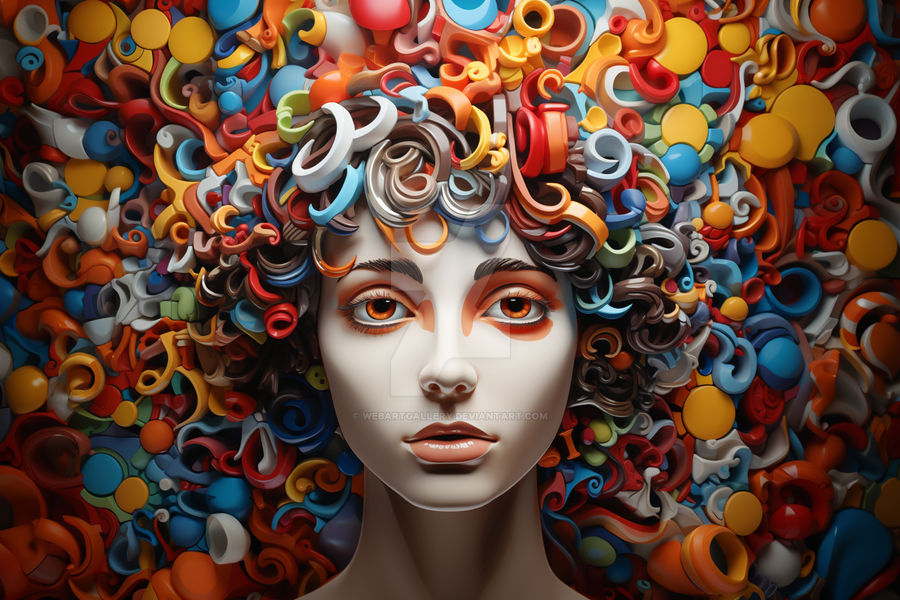Reframing ADHD
ADHD is often seen as a challenge, primarily associated with distraction, impulsivity, and restlessness. However, this view overlooks the remarkable strengths that ADHD can bring, especially in creative and innovative fields. While ADHD may present obstacles, it can also be a catalyst for out-of-the-box thinking, creativity, and problem-solving. Individuals with ADHD often excel in spontaneity, divergent thinking, and making unique connections that others may miss. These traits can fuel creativity in industries where unconventional approaches and new perspectives drive success.
Lets see how the ADHD brain is wired for innovation, how its traits can be leveraged to foster breakthrough ideas, and how several successful individuals with ADHD have channeled their unique abilities into groundbreaking careers. By shifting the focus from the challenges to the strengths of ADHD, we can uncover its powerful potential in fueling creativity and innovation.
The ADHD Brain: Wired for Creativity and Divergent Thinking
Individuals with ADHD often experience a brain that craves stimulation and thrives on variety. While this need for novelty can make traditional environments challenging, it’s also what sparks creativity. The ADHD brain is naturally wired for divergent thinking—seeing multiple possibilities and solutions to a problem. This unconventional thinking allows individuals to approach tasks from angles others might not consider, generating ideas that can lead to creative breakthroughs.
Divergent thinking is critical for innovation, as it fosters the ability to think outside the box. In a fast-paced, ever-changing environment, ADHD individuals often excel because their spontaneous thinking leads to fresh ideas and new directions. Hyperfocus is another key trait: when someone with ADHD becomes deeply engaged in a project that stimulates their interest, they can sustain a high level of focus and productivity for extended periods, often producing exceptional creative work.
By embracing their unique cognitive style, individuals with ADHD can tap into their natural strengths in fields that value creativity, such as design, music, entrepreneurship, and more. Their ability to innovate, take risks, and explore new ideas is often a direct result of how their brains work.
From Challenge to Innovation: How ADHD Fuels Breakthrough Ideas
ADHD traits, often seen as challenges, can be reframed as the drivers of innovation. The willingness to take risks, trust intuition, and break from conventional thinking are hallmarks of creativity—and these are traits that many with ADHD naturally possess. Where others might follow predictable paths, ADHD individuals often explore unconventional routes, leading to breakthroughs.
For instance, Richard Branson, founder of the Virgin Group, is an entrepreneur with ADHD known for his bold and unconventional business strategies. He attributes much of his success to his ADHD-driven ability to think creatively and take calculated risks that others may shy away from. Similarly, David Neeleman, founder of JetBlue Airways, credits his ADHD for giving him the visionary mindset that led to innovations in the airline industry.
ADHD often allows individuals to see problems differently, helping them spot solutions or opportunities that others may overlook. This unique approach to problem-solving, combined with their natural curiosity and energy, gives them the edge in industries that thrive on innovation. From technology startups to creative ventures, ADHD has been a catalyst for visionary ideas that change industries and push boundaries.
Success Stories: Creative Icons with ADHD
Many successful individuals in the arts, business, and technology have embraced their ADHD, turning what was once seen as a disadvantage into a strength. Will.i.am, the musician and tech entrepreneur, credits ADHD for his multifaceted creativity. His ability to juggle music, fashion, and tech innovation is a direct result of his ADHD traits, which allow him to think quickly and adapt to different creative projects.
Justin Timberlake, another artist with ADHD, has spoken openly about how his condition helps him stay focused and driven in his artistic pursuits. His success in music and acting stems from his ability to channel the hyperfocus that ADHD can bring into his work, allowing him to deliver high-quality performances.
These examples show how ADHD can be a driving force in creative careers, where spontaneity, divergent thinking, and the ability to juggle multiple ideas are invaluable assets. By embracing their ADHD traits, these creative icons have not only thrived but have also helped reshape their industries. Their stories serve as powerful reminders that ADHD can fuel success, pushing the boundaries of what’s possible in innovation and creativity.
ADHD in Creative Careers: Thriving in Unstructured Environments
Many individuals with ADHD find themselves thriving in creative fields where flexibility, freedom, and fast-paced environments are not just welcomed but essential for success. Unlike rigid, routine-driven jobs, careers in graphic design, writing, performing arts, and entrepreneurship allow people with ADHD to embrace their spontaneity, think outside the box, and stay engaged with varied tasks.
For instance, graphic designers can play with visual elements, often leveraging their ability to see patterns and connections that others might miss. Writers and performing artists use their creativity to express themselves in unique ways, drawing from their ADHD-driven emotional depth and divergent thinking. Entrepreneurs with ADHD thrive in the fast-paced world of business, where constant change and the ability to pivot quickly offer them a sense of purpose and excitement.
These career paths cater to ADHD strengths by allowing individuals to work in ways that feel natural—whether it’s hyper-focusing on a project or juggling multiple creative ideas at once. By finding roles that value innovation and flexibility, people with ADHD can maximize their potential and create meaningful, impactful work.
Tips for Harnessing ADHD Creativity: Turning Traits into Strengths
For individuals with ADHD, channeling creativity into productive work can sometimes feel challenging, but with the right strategies, those traits can become powerful strengths. Here are a few tips for turning ADHD’s unique characteristics into creative fuel:
- Use project-based work: When an exciting project captures their attention, people with ADHD can enter a state of hyperfocus, leading to bursts of productivity. Breaking work into smaller, time-bound projects can help maintain this momentum.
- Visualize ideas: Whether through mind maps, sketches, or digital tools like Trello, visually organizing thoughts can help ADHD individuals process their ideas clearly, making it easier to manage complex tasks.
- Leverage technology: Tools like time management apps (e.g., Pomodoro timers or task lists) can help ADHD individuals stay on track without feeling constrained by rigid schedules.
- Embrace spontaneity: Instead of fighting the natural flow of spontaneous ideas, build space for intuitive thinking into the creative process. This can lead to unexpected, groundbreaking solutions.
By embracing their intuitive, out-of-the-box approach, people with ADHD can leverage their unique working styles to excel in creative endeavors and maximize their potential.
Embracing ADHD as a Creative Superpower
ADHD, often seen as a challenge, can actually be a source of immense creativity and innovation. By reframing how we view ADHD traits—such as spontaneity, divergent thinking, and hyperfocus—we can appreciate the unique gifts that come with this condition. These strengths are invaluable in creative fields and have led to some of the most groundbreaking ideas in business, arts, and technology.
Rather than seeing ADHD as a barrier, it’s important to recognize it as a potential superpower. By finding the right environment and adopting strategies that align with their strengths, individuals with ADHD can turn their differences into their greatest assets, fueling creativity, innovation, and success.



